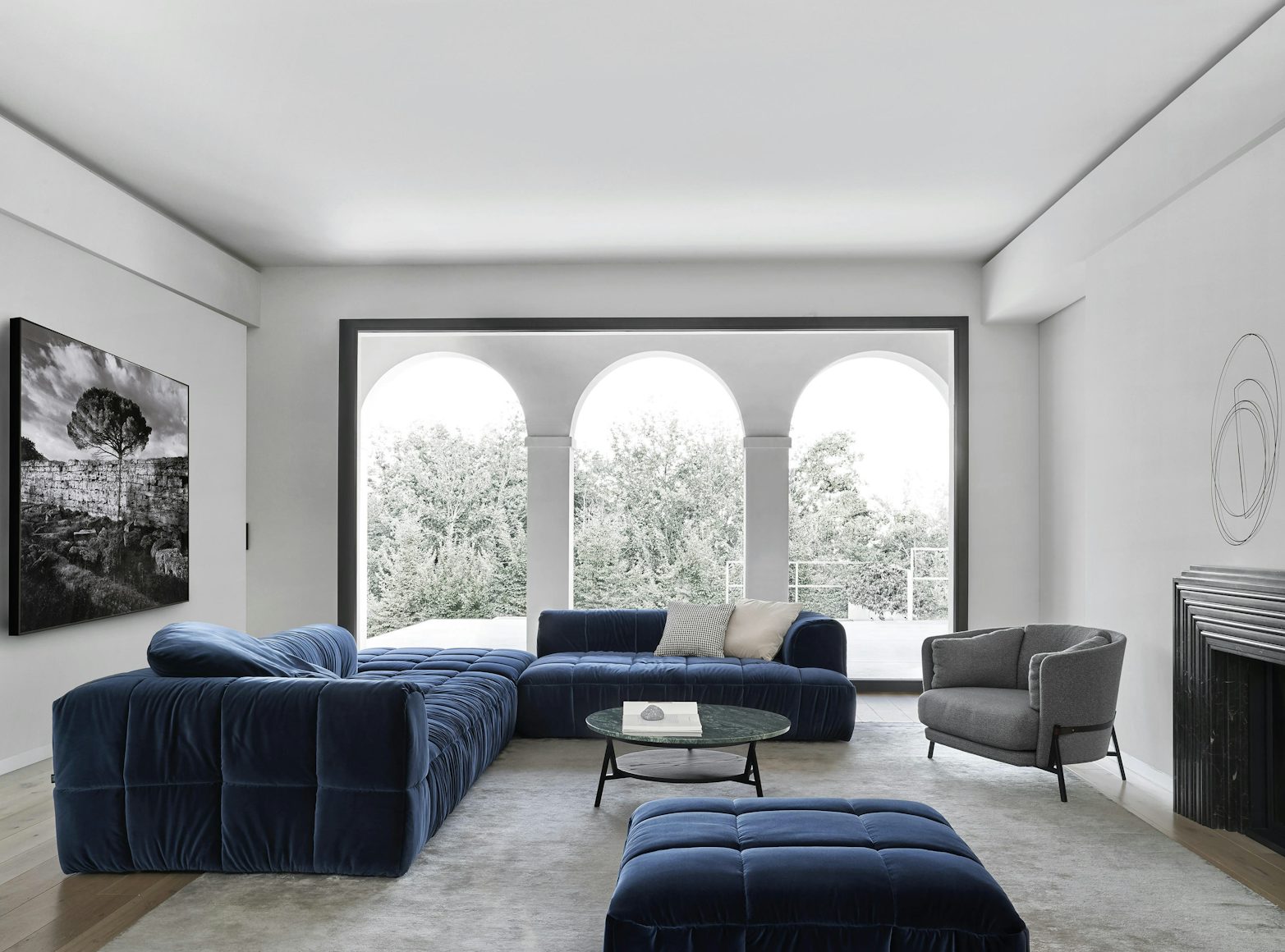Posted in Interviews
Interview: Cini Boeri

She may keep a low profile, but Cini Boeri is a living legend. The 94-year-old Italian architect was pushing the boundaries of industrial and product design back when most women were either doing housework or being shown off as arm candy.
Boeri graduated from the Politecnico di Milano in 1951 and collaborated with Marco Zanuso before setting up her own studio a decade later. Her body of work is extensive, yet she’s best known for creating innovative and adjustable seating systems that can easily adapt to people’s lifestyles. Most delightfully, Boeri’s chairs and sofas adapt seamlessly to people’s bodies. Her 1972 ‘Strips’ collection for Arflex, which won the Compasso D’oro award, had removable quilted covers that were meant to be unzipped and used as blankets. Just a year earlier, she’d designed the distinctive ‘Serpentone,’ a plump, snake-like couch of potentially infinite length. Her eye for generous curves and ergonomic comfort was incredibly prescient- it’s as if she could imagine the esthetic preferences and daily lives of generations to come.
We asked Boeri about the joys and challenges of being an iconoclast, and her words of wisdom for young female colleagues.
What led you to study architecture and design?
I do not remember why I decided to go to architecture school but I remember having absolutely no doubts or second thoughts about it. I finished high school and immediately enrolled at the Politecnico di Milano.

What are some of the most memorable moments of your career or some of your favorite designs?
I am very attached to the Serpentone, a long sofa that was easy to construct and could be sold by the meter. It was made of injection-molded polyurethane foam, without an internal rigid structure. Unfortunately, the right material to produce it consistently was never found, something that would provide the adequate stability, resistance and durability, so it has not been made in years. But the exercise led me to create Strips, a series of modular sofas and sofabeds without rigid internal structures, which were very successful and are still produced by Arflex in large quantities.



Your Botolo chair, designed in 1973, has seen a resurgence lately. John Pawson, for example, used it widely in the new Jaffa hotel in Tel Aviv. What are your thoughts about this?
A few years ago Arflex proposed to re-release the Botolo, and I accepted with joy. We have expanded the possibilities for the chair, adding a variety of finishes to the catalogue. I’m very glad that this seating remains valid even after so many years.
In general, how or where do you find inspiration?
I always try to provide satisfactory answers and solutions to my clients. If I have to design their home, I want get to get to know the customer and create something in harmony with their lifestyle. I propose and guide without imposing. Same thing in product design; I try to come up with things that are new and useful, hoping to improve people’s lives with my work.
Who have you admired in your line of work and why?
After graduating, I began looking for a job and soon found an internship with Gio Ponti, in his studio in Via Dezza. There I learned a certain physical and mental discipline in the creation of projects and in the making of decisions. Then I worked many years with Marco Zanuso. I was mainly involved in architecture but I still came into contact with the studio’s design work and its various collaborators, such as Richard Sapper.

What were the challenges of being a woman in a male-dominated industry during your early or even mid years?
As I mentioned, I had no doubts about enrolling in architecture school. There were very few women at the university, and my colleagues and professors openly advised that the it was a male field. But I didn’t lose heart and graduated. During my career I was called “miss,” and “missis” but very rarely “architect.” Today I am regarded without prejudice. In my life I’ve also met many female architects who were great professionals, capable, intelligent, and more than valid equivalents to their male colleagues, like Anna Castelli Ferrieri with Gardella and Franca Helg with Albini. I remember it was Franca who urged me to open my studio, and to do it before I became an indissoluble part of Zanuso.

Any advice for the new generation female designers?
You have to be curious- that’s the way to learn, even at my age. My studio lives on and continues to propose ideas, because I think that proposing ideas with optimism is the duty of a designer. The arguments have to be valid, obviously. I also believe that an architect must be able to relate to the society in which he or she lives, or rather, the society in which he or she would like to live. Architects should be aware of the politics, the economy and the environment where they operate, and make sure their choices are in harmony with these spheres.


